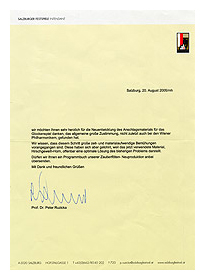Trivia
Nara deer... in Europe?!
In 1993, Yamaha supplied a celesta to the Vienna Philharmonic Orchestra in Austria. Yamaha was then asked to create a glockenspiel version. The sound bars were made thicker and the surface was gold-plated. The hammers were also modified in several ways.
The ends of the hammers were first made from bronze, and then resin... but the sound was lacking something. Hearing that the ends of mallets were once made from ivory, Yamaha designers tried using that material and were impressed with the sound. However, the Washington Convention prohibits sending ivory overseas. Suddenly, the designers were struck with inspiration. What about "chanchiki," the small gongs originally used in Japanese court music? The tips of the mallets used for playing these instruments are made from deer horn.
The designers got their hands on some deer horn as quickly as possible, installed it to the instrument, and were stunned at the depth and reverberation of the sound, which compared very favorably with ivory.
It was impossible to control the volume of previous keyboard glockenspiels, so Yamaha went one step further and made use of the action mechanism from a grand piano to allow for complete volume control, from pianissimo (pp) to fortissimo (ff). Players and conductors were overjoyed. Then, in August 2005 the Salzburg Festival was held. The sound of the Yamaha glockenspiel being struck by hammers made from Nara deer horn reverberated throughout the hall during a performance of "The Magic Flute" conducted by Riccardo Muti. The audience sat entranced by this wonderful mix of Japanese and European traditional culture.

Thank-you letter received from the festival director
